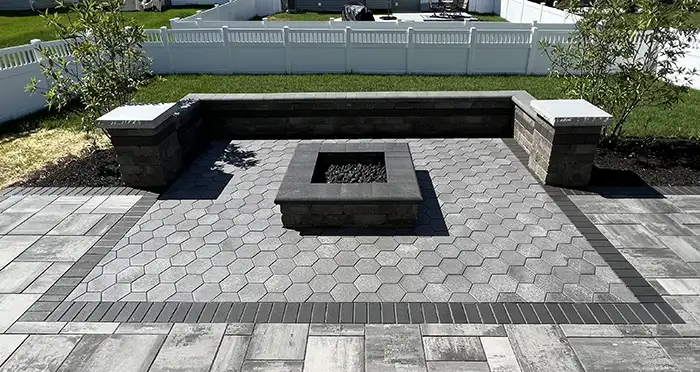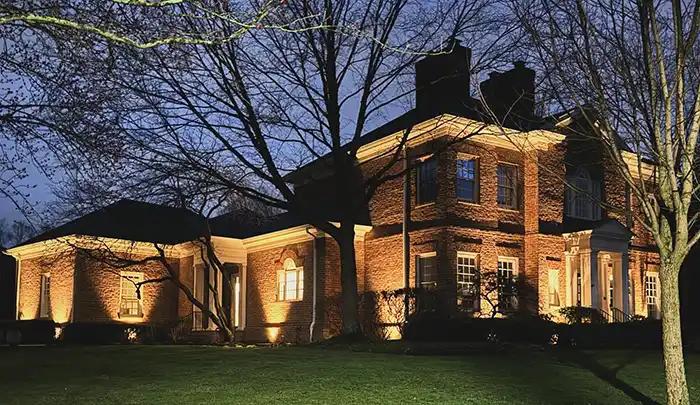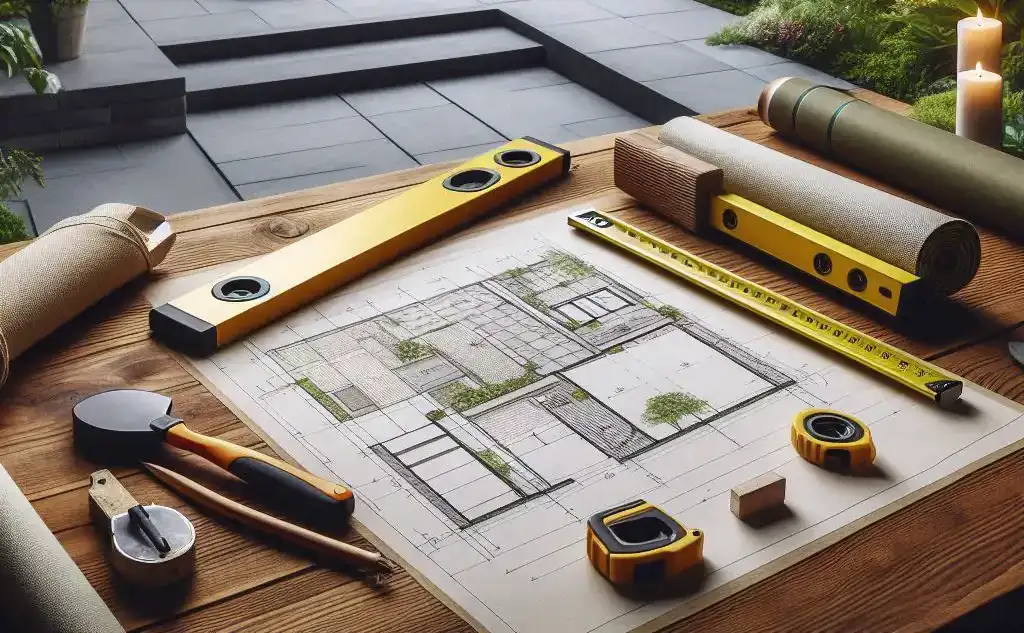Questions to Ask Yourself Before Building a New Patio
Before building a new patio, consider its purpose, as this influences size, design, and features. Evaluate the available space to guarantee it meets your needs and complements your landscaping. Location is key; think about sun exposure, views, and accessibility. Choose durable, low-maintenance materials that fit your aesthetic. Plan lighting for safety and ambiance, using energy-efficient options. Finally, establish a clear budget, including a contingency fund, and explore financing options if needed. Addressing these questions will help create a functional and enjoyable patio space tailored to your lifestyle. For more detailed guidance, exploring further will provide valuable insights.
Key to Planning
- What is the primary purpose of the patio (e.g., entertaining, relaxation, cooking)?
- How much available space can be allocated for the patio without overcrowding?
- How will the patio’s location affect sun exposure, views, and accessibility?
- What materials best suit the desired durability, aesthetics, and maintenance needs?
- What is your budget, and do you have financing options for unexpected expenses?
More patio information
Purpose of the Patio
Determining the purpose of the patio is crucial as it influences everything from size and location to budget and design. Knowing the intended use helps shape the overall vision. Whether the patio will host family gatherings, support outdoor activities, or provide a tranquil retreat affects how it should be designed. For instance, a patio intended for large family gatherings might require ample seating and dining space, while one for relaxation could focus on comfortable lounging areas.
Current design trends emphasize multifunctional outdoor spaces. Incorporating elements like outdoor kitchens or fireplaces can transform a simple patio into a versatile extension of the home. These features not only cater to different outdoor activities but also elevate the aesthetic appeal. High-end materials and custom features, such as built-in seating or fire pits, are popular choices that align with modern trends.
 Seasonal features should also be considered when determining the patio’s purpose. Will the space be used year-round or only during specific seasons? Adding elements like pergolas, heaters, or even retractable awnings can enhance usability throughout the year. This foresight guarantees that the patio remains a valuable part of the home regardless of the season. See more: Paver Patio Ideas
Seasonal features should also be considered when determining the patio’s purpose. Will the space be used year-round or only during specific seasons? Adding elements like pergolas, heaters, or even retractable awnings can enhance usability throughout the year. This foresight guarantees that the patio remains a valuable part of the home regardless of the season. See more: Paver Patio Ideas
Available Space
Considering the available space is essential for designing a functional and aesthetically pleasing patio. Patio dimensions directly impact how the area will be used and what features can be included. Evaluating the space layout helps in planning where to place furniture, grills, or outdoor kitchens without overcrowding the area. For those with spacious backyards, there’s more design flexibility, allowing for creative and expansive designs. However, even smaller yards can be optimized with thoughtful planning.
Space constraints may require adjustments to initial design ideas, but they don’t have to limit the patio’s potential. One can expand existing slabs or decks to make the most of the available area. Analyzing the current landscaping integration is also significant. A well-integrated patio complements the surrounding greenery, enhancing the overall aesthetic. This harmonious blend can create a seamless shift between the patio and the rest of the yard.
Outdoor accessibility is another important consideration. Ensuring easy access to and from the patio area can enhance its usability. Paths should be clear, and steps should be safe and well-lit. This not only makes the patio more inviting but also functional for all users, including those with mobility issues.
Ultimately, understanding the available space allows for a more efficient and enjoyable design process. It enables homeowners to create a patio that meets their needs while fitting harmoniously within their existing outdoor environment. Thoughtful planning and consideration of patio dimensions, space layout, design flexibility, landscaping integration, and outdoor accessibility will lead to a successful and satisfying patio project.
Location Considerations
When choosing the location for a patio, homeowners should evaluate factors like proximity to the house, sun exposure, and accessibility. Proximity convenience is vital, especially if the patio will be used for entertaining, as it should be near the kitchen or living areas. This makes it easier to transport food, drinks, and other essentials without hassle.
Sun exposure is another key consideration. Homeowners need to think about the amount of sunlight the patio will receive throughout the day. While some might prefer a sun-drenched spot, others could opt for shade options to provide a cooler, more comfortable environment. Observing the sun’s path can help in making this decision, ensuring the patio meets the household’s preferences.
An accessibility assessment is essential for making the patio user-friendly for everyone. This includes thinking about paths leading to the patio, ensuring they are wide, smooth, and free of obstacles. If the patio is intended for use by family members with mobility issues, incorporating ramps or gentle slopes can enhance accessibility.
View optimization plays a significant role in the patio’s enjoyment factor. Homeowners should assess the best views from their backyard and position the patio to take full advantage of these vistas. Whether it’s a beautiful garden, a scenic landscape, or a tranquil water feature, optimizing the view can elevate the overall experience.
Ultimately, a thoughtful approach to location considerations, balancing sun exposure, shade options, accessibility assessment, view optimization, and proximity convenience, will result in a patio that’s both practical and delightful for everyday use.
Material Choices
Selecting the right materials for a patio is vital for both functionality and aesthetics, influencing the space’s durability and overall appeal. When choosing patio materials, one must consider several factors, including material durability, aesthetic preferences, maintenance requirements, installation techniques, and environmental impact.
Concrete is a popular choice due to its material durability and cost-effectiveness. It’s easy to maintain and can be stamped or colored to suit various aesthetic preferences. However, it may crack over time if not properly installed. Installation techniques for concrete require a solid base to prevent shifting and guarantee longevity.
Brick provides a classic look and is known for its durability. It’s typically installed on a gravel or concrete base. Although bricks can withstand heavy use, they might need occasional maintenance to replace any that crack or become loose.
Pavers offer versatility in shapes and colors, allowing for customization to match one’s aesthetic preferences. They are durable and relatively easy to replace if damaged. Proper installation techniques, such as interlocking systems on a well-prepared base, are essential to prevent shifting over time.
Natural stone, though more expensive, provides a timeless and earthy appeal. Its material durability is exceptional, but it requires more maintenance to prevent moss and weed growth in the joints. The installation process for stone can be labor-intensive, necessitating precise placement to achieve a level surface.
Considering the environmental impact of material choices is also important. For instance, natural stone has a low environmental footprint, while concrete production involves higher carbon emissions.
Ultimately, the choice of patio material should balance durability, aesthetic preferences, maintenance requirements, installation techniques, and environmental impact to create a beautiful and functional outdoor space. More about: Patio materials: pros and cons
Lighting Options
Proper lighting options can transform a patio into a welcoming and functional space for evening and nighttime use. It’s important to take into account various types of lighting to enhance the ambiance, guarantee safety, and provide adequate illumination for specific tasks. Here are a few key lighting considerations:
Ambient Lighting: This type of lighting creates a warm and inviting atmosphere, perfect for general illumination. String lights, lanterns, or soft LED lights can be used to achieve this effect. Ambient lighting helps set the mood without being too harsh.
Task Lighting: For areas where activities like grilling or reading might take place, task lighting is significant. Bright and focused lights, such as spotlights or mounted fixtures, make sure that these areas are well-lit. Task lighting is functional and helps avoid accidents during tasks that require precision.
Solar Options: Eco-friendly and cost-effective, solar lights are an excellent choice for patios. They harness energy from the sun during the day and automatically light up at night. Solar options are not only easy to install but also reduce energy consumption.
 When choosing lighting, decorative fixtures can add a touch of elegance and style to the patio. Options like hanging pendants, wall-mounted sconces, or even ground-level lights can enhance the overall aesthetic. However, it’s crucial to incorporate safety considerations into the lighting plan. Adequate illumination of pathways, stairs, and edges of the patio prevents trips and falls, guaranteeing a safe environment for all guests. More about: Landscape Lighting
When choosing lighting, decorative fixtures can add a touch of elegance and style to the patio. Options like hanging pendants, wall-mounted sconces, or even ground-level lights can enhance the overall aesthetic. However, it’s crucial to incorporate safety considerations into the lighting plan. Adequate illumination of pathways, stairs, and edges of the patio prevents trips and falls, guaranteeing a safe environment for all guests. More about: Landscape Lighting
Budget and Costs
Establishing a clear budget upfront is vital for making informed decisions about patio construction. When planning a new patio, it’s important to know how much one is willing to spend and whether there’s any budget flexibility to accommodate unexpected costs or additional features. This clarity helps in making smart choices about materials, design, and size.
A thorough cost comparison of different materials can greatly impact the decision-making process. For instance, natural stone may offer a timeless appeal but could be more expensive compared to pavers or stamped concrete. Understanding these differences allows homeowners to align their vision with their financial capacity.
Maintenance expenses should also be factored into the budget. Some materials require more upkeep than others, which could translate into higher long-term costs. For example, while brick patios offer a classic look, they may necessitate regular sealing and cleaning, adding to the overall expense.
Unexpected costs can arise during construction, such as unforeseen site preparation needs or last-minute design changes. Being prepared for these surprises by setting aside a contingency fund is wise. This additional cushion guarantees the project stays on track without compromising on quality or features.
Financing options are another consideration. Homeowners might explore various financing routes like home improvement loans or even payment plans offered by contractors. These options can ease the financial burden, making it more feasible to achieve the desired patio without immediate financial strain.
Frequently Asked Questions
What Certifications and Credentials Should My Patio Contractor Have?
When evaluating contractor qualifications, they should verify licensing requirements and insurance coverage. Reviewing previous projects and customer reviews helps gauge reliability. Certifications like ICPI and manufacturer-specific credentials guarantee expertise and quality.
 How Will the Patio’s Design Impact Existing Drainage and Runoff?
How Will the Patio’s Design Impact Existing Drainage and Runoff?
When designing a patio, think of water flow like a river finding its path. Proper drainage solutions and runoff management prevent flooding. Design considerations and landscaping integration guarantee the patio complements the yard without causing water issues.
What Measures Will Be Taken to Protect My Lawn During Construction?
He’ll ask about lawn protection methods, construction site prep, and landscaping considerations. The company should explain erosion control strategies and temporary barrier installation to guarantee minimal damage and a smooth changeover back to the original landscaping.
How Long Will the Construction of My Patio Take?
The construction timeline depends on weather considerations, material selection, labor availability, and budget constraints. Clients should discuss these factors with the contractor to get a realistic estimate and guarantee the timely completion of their patio project.
What Are the Long-Term Maintenance Requirements for My Patio?
When considering long-term maintenance, they should evaluate material durability, seasonal cleaning needs, weather resistance, surface treatments, and repair options. Proper understanding guarantees the patio remains functional and aesthetically pleasing for years to come.








